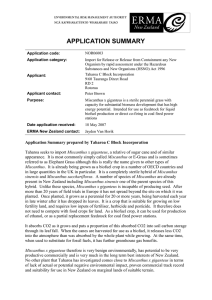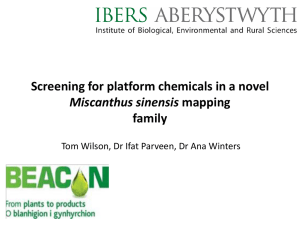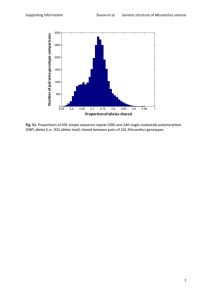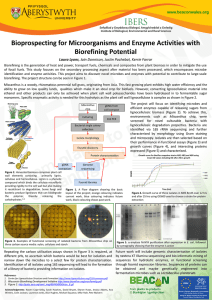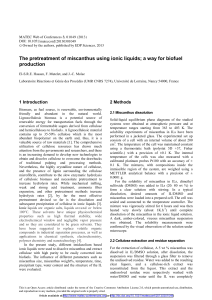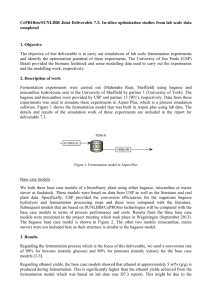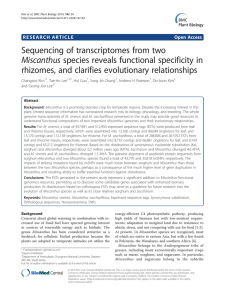View/Open - Hasanuddin University
advertisement
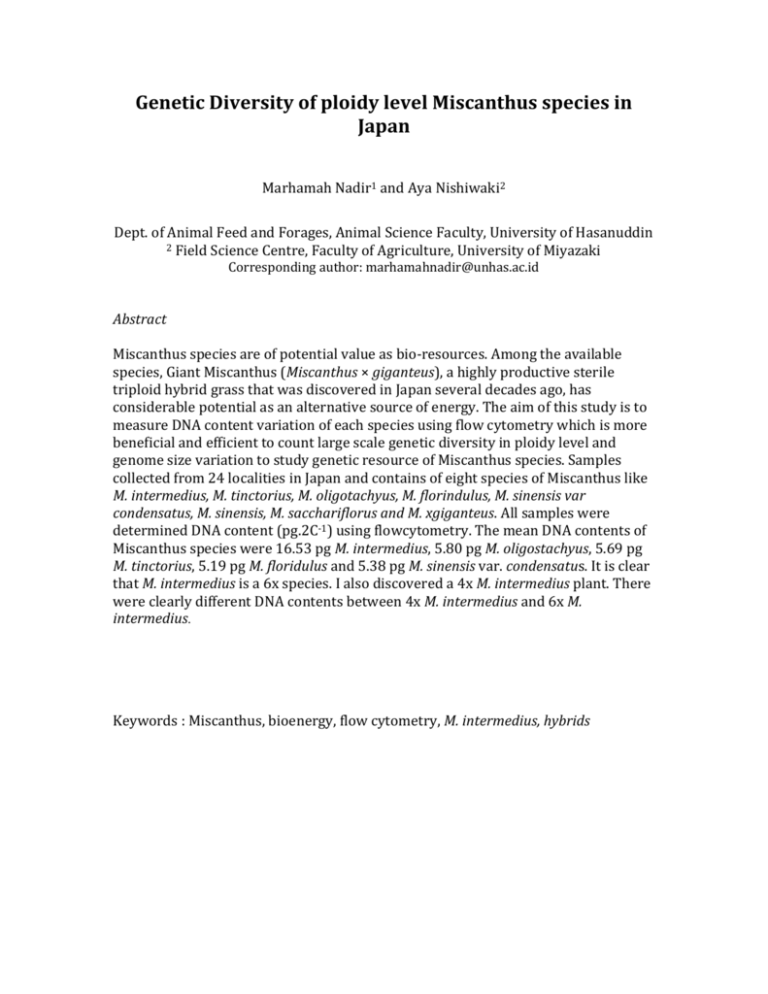
Genetic Diversity of ploidy level Miscanthus species in Japan Marhamah Nadir1 and Aya Nishiwaki2 Dept. of Animal Feed and Forages, Animal Science Faculty, University of Hasanuddin 2 Field Science Centre, Faculty of Agriculture, University of Miyazaki Corresponding author: marhamahnadir@unhas.ac.id Abstract Miscanthus species are of potential value as bio-resources. Among the available species, Giant Miscanthus (Miscanthus × giganteus), a highly productive sterile triploid hybrid grass that was discovered in Japan several decades ago, has considerable potential as an alternative source of energy. The aim of this study is to measure DNA content variation of each species using flow cytometry which is more beneficial and efficient to count large scale genetic diversity in ploidy level and genome size variation to study genetic resource of Miscanthus species. Samples collected from 24 localities in Japan and contains of eight species of Miscanthus like M. intermedius, M. tinctorius, M. oligotachyus, M. florindulus, M. sinensis var condensatus, M. sinensis, M. sacchariflorus and M. xgiganteus. All samples were determined DNA content (pg.2C-1) using flowcytometry. The mean DNA contents of Miscanthus species were 16.53 pg M. intermedius, 5.80 pg M. oligostachyus, 5.69 pg M. tinctorius, 5.19 pg M. floridulus and 5.38 pg M. sinensis var. condensatus. It is clear that M. intermedius is a 6x species. I also discovered a 4x M. intermedius plant. There were clearly different DNA contents between 4x M. intermedius and 6x M. intermedius. Keywords : Miscanthus, bioenergy, flow cytometry, M. intermedius, hybrids Field of presentation: Cellular Science Type of presentation: Oral Genetic Diversity of ploidy level Miscanthus species in Japan Marhamah Nadir1 and Aya Nishiwaki2 1 Dept. of Animal Feed and Forages, Animal Science Faculty, University of Hasanuddin 2 Field Science Centre, Faculty of Agriculture, University of Miyazaki Miscanthus species are of potential value as bio-resources. Among the available species, Giant Miscanthus (Miscanthus × giganteus), a highly productive sterile triploid hybrid grass that was discovered in Japan several decades ago, has considerable potential as an alternative source of energy. The aim of this study is to measure DNA content variation of each species using flow cytometry which is more beneficial and efficient to count large scale genetic diversity in ploidy level and genome size variation to study genetic resource of Miscanthus species. Samples collected from 24 localities in Japan and contains of eight species of Miscanthus like M. intermedius, M. tinctorius, M. oligotachyus, M. florindulus, M. sinensis var condensatus, M. sinensis, M. sacchariflorus and M. xgiganteus. All samples were determined DNA content (pg.2C-1) using flowcytometry.The mean DNA contents of Miscanthus species were 16.53 pg M. intermedius, 5.80 pg M. oligostachyus, 5.69 pg M. tinctorius, 5.19 pg M. floridulus and 5.38 pg M. sinensis var. condensatus. It is clear that M. intermedius is a 6x species. I also discovered a 4x M. intermedius plant. There were clearly different DNA contents between 4x M. intermedius and 6x M. intermedius.
